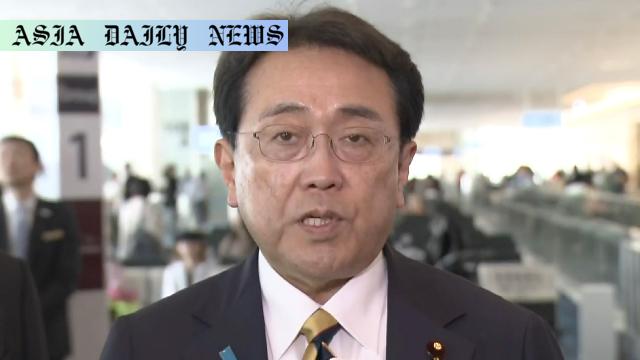Tariff Talks: Japan’s negotiator heads to the U.S. to address contentious import levies and work toward a win-win agreement.

Japan’s Negotiator Heads to the U.S. for Tariff Talks
Japan’s chief tariff negotiator, Akazawa Ryosei, has embarked on a crucial journey to the United States for the third round of discussions aimed at resolving critical trade tensions. These meetings are part of an ongoing effort to address the recent U.S. tariffs on Japanese imports, which have caused ripples across international markets and provoked strong responses from Japan’s trade and industry leaders. Departing from Tokyo’s Haneda airport on Friday morning, Akazawa expressed his determination to work toward removing the tariffs while fostering a ‘win-win’ resolution for both nations.
Prime Minister Ishiba Shigeru, ahead of these discussions, advised Akazawa to remain open to conversations on a wide range of trade issues. These directives demonstrate Japan’s strategic approach to addressing not just the immediate tariff concerns, but also reinforcing long-term economic collaboration between the two nations.
Impact on Global Trade and Japan’s Automobile Industry
The economic ramifications of U.S. tariffs have not gone unnoticed. Katayama Masanori, head of the Japan Automobile Manufacturers Association, has voiced significant concerns about the consequences of these trade barriers. He highlighted that the tariffs have already begun to damage the global economy, hitting industries that depend on the free flow of goods across borders.
Japan’s automobile industry is particularly impacted, as these tariffs increase costs for manufacturers and create uncertainty in operational and investment decisions. In light of these challenges, industry representatives have urged the government to prioritize swift action to alleviate these trade constraints.
Challenges Ahead in the Negotiation Process
One complicating factor in the upcoming talks is the absence of U.S. Treasury Secretary Scott Bessent, who played a key role in earlier discussions. This raises questions about the continuity of dialogue and the potential need for further negotiations down the line. Akazawa acknowledged this development and remains prepared for further meetings to ensure the objectives are fully achieved.
With both nations seeking common ground, the focus will be on balancing competing interests. Japan seeks relief from the burdensome tariffs while respecting U.S. economic policies. Conversely, the U.S. will likely attempt to secure concessions that align with its broader trade objectives. The success of these discussions hinges on the ability to bridge these gaps in a mutually beneficial manner.
Conclusion: A High-Stakes Moment for Japan-U.S. Relations
The third round of Japan-U.S. tariff negotiations serves as a pivotal moment in the evolving trade relationship between the two nations. Both countries stand to benefit significantly from a favorable agreement that not only resolves immediate concerns but also strengthens the foundations for future collaboration.
Stakeholders across various industries and governments have recognized the high stakes involved, making the outcome of these discussions a matter of global importance. As Akazawa steps into the negotiation room, the world will watch closely to see if a breakthrough can be achieved, paving the way for a more stable and prosperous global economy.
Commentary
Significance of Japan-U.S. Trade Negotiations
The ongoing tariff talks between Japan and the United States embody a crucial juncture in global trade policy. With economic tensions escalating between countries in recent years, the discussions serve as an opportunity to shift the narrative toward collaboration and mutual benefit. Akazawa Ryosei’s determination to navigate these complex trade dynamics is a testament to Japan’s commitment to maintaining a rules-based global trade system.
Broader Implications for the Global Economy
The damage warned of by the Japan Automobile Manufacturers Association underscores the widespread impact of protectionist policies, which often cascade beyond the industries they directly target. Higher costs, reduced global competitiveness, and disruption of supply chains are just a few of the setbacks that have already emerged. The swift removal of these tariffs could potentially reverse some of these adverse effects and revive confidence among investors and industries worldwide.
Looking Forward: A Balancing Act
The absence of key players, like Treasury Secretary Scott Bessent, adds a layer of complexity to these talks, potentially elongating the path to consensus. However, this also presents an opportunity for other stakeholders to step forward and introduce fresh perspectives into the conversation. Both nations must tread carefully, recognizing the long-term consequences of their actions—or inactions—on their respective economies and global economic stability.
Ultimately, the third round of Japan-U.S. tariff negotiations represents more than just a bilateral effort; it’s a case study in the challenges and opportunities of international diplomacy in an interconnected world. The path to resolution may be arduous, but the potential rewards—market stability, enhanced trade flows, and renewed international trust—are well worth the effort.


